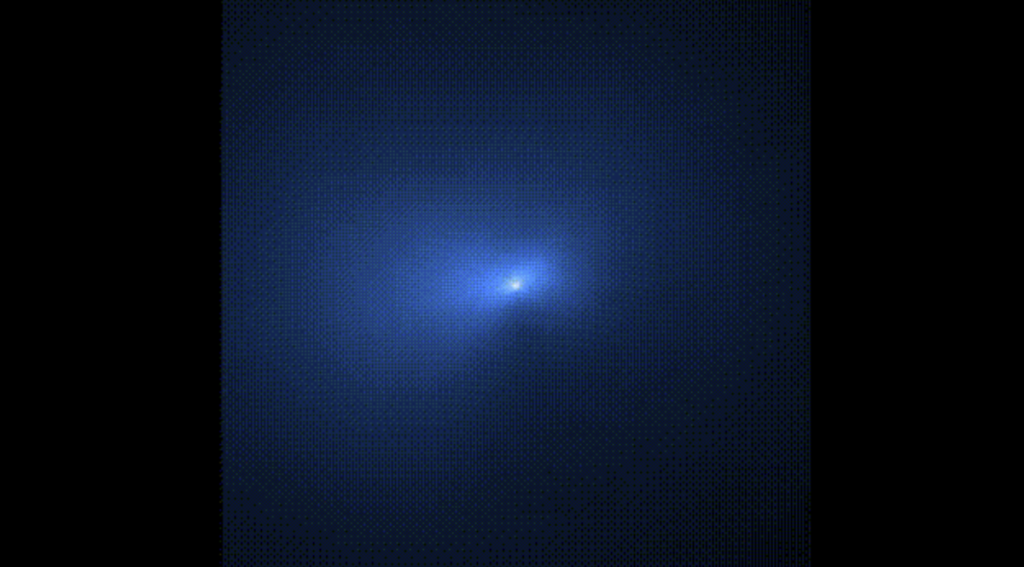For as long as humans have looked to the night sky, the mysteries of space have stirred both wonder and fear.
Others are reading now
From fiery meteors to silent comets, these wanderers remind us how small our world is in the vastness of the universe.
When scientists discover something from beyond our Solar System, it feels like a rare chance to touch another star.
But a new study suggests that our latest visitor may not be the pristine messenger we hoped for.
Ancient traveler
On July 1, 2025, astronomers at the Asteroid Terrestrial-impact Last Alert System (ATLAS) in Hawaii detected a large object moving quickly through the Solar System.
Early observations confirmed it was an interstellar comet, the third ever found after 1I/ʻOumuamua and 2I/Borisov.
Also read
Named 3I/ATLAS, the comet displayed the classic coma of dust and gas seen in Solar System comets.
Yet it behaved in unusual ways, forming a rare “anti-tail” and showing a chemical makeup unlike anything seen before.
Scientists believe it may be a fragment of matter billions of years old, carrying clues to the environments of distant planetary systems.
NASA’s Tom Statler told The Guardian that despite speculation, 3I/ATLAS “looks like a comet. It does comet things… The evidence is overwhelmingly pointing to this object being a natural body.”
Unusual chemistry
A new analysis by researchers in Belgium and the United States, published on the preprint server arXiv, examines 3I/ATLAS using data from the James Webb Space Telescope (JWST) and NASA’s SPHEREx mission.
Also read
They found the comet’s coma to be exceptionally rich in carbon dioxide, with a CO2-to-water ratio far higher than in comets from our Solar System.
This high concentration puzzled astronomers because 3I/ATLAS was still far from the Sun when the readings were taken, meaning solar radiation alone could not explain it.
According to the study, the ratio of CO2 to H2O was 7.6 to 1, a value more than four standard deviations above the norm.
The scientists considered several explanations, including differences in the comet’s birthplace or variations in early disk chemistry, but none fit as well as a process involving long-term exposure to cosmic radiation.
Shaped by cosmic rays
The team proposes that over billions of years, high-energy galactic cosmic rays bombarded the comet’s surface, transforming carbon monoxide into carbon dioxide and creating an organic-rich crust.
Also read
Laboratory experiments support this idea, showing that such radiation can slowly alter the chemistry of icy bodies in deep space.
If correct, this means the surface of 3I/ATLAS is not a window into a young planetary system but a layer reshaped by eons of radiation.
The researchers estimate that current outgassing is releasing material from the top fifteen to twenty meters of the nucleus, still within this processed zone.
“Rather than being pristine messengers from distant planetary systems, interstellar objects may instead carry signatures of processed material,” the authors write.
These findings suggest that by the time such objects reach us, their original compositions may be hidden beneath layers altered by cosmic rays.
What it means for science
Also read
The results are disappointing for astronomers hoping to study untouched material from another star. If most interstellar objects are similarly “weathered” by cosmic radiation, it could be far harder to learn about their places of origin.
Still, the discovery offers new insight into how matter changes as it drifts between stars.
The team notes that 3I/ATLAS might still expose deeper, unaltered material when it nears the Sun, though they call this unlikely.
For now, telescopes across the world continue to track the comet, gathering more data in the hope of confirming the theory.
Even if 3I/ATLAS is not the pristine relic scientists wanted, it may reveal how the harsh conditions of interstellar space shape the building blocks of worlds.
Also read
Sources: NASA, JWST data, SPHEREx mission, The Guardian, arXiv
This article is made and published by Kathrine Frich, who may have used AI in the preparation


